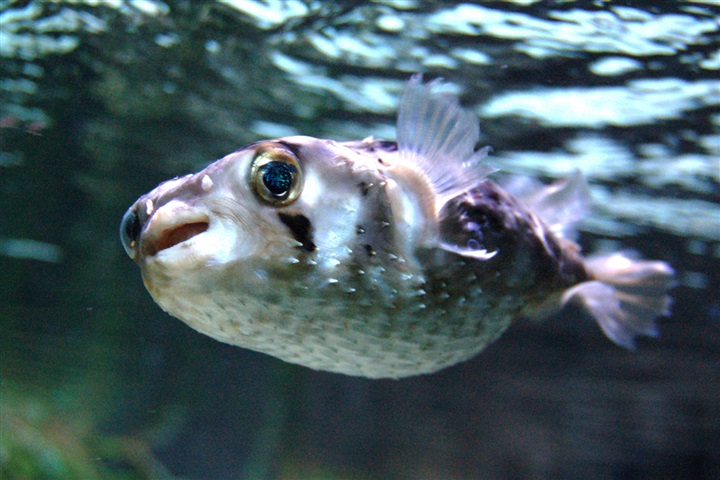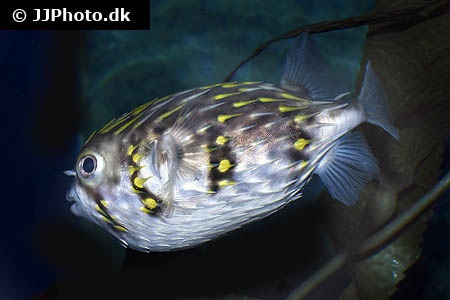Diodon nicthemerus


| Latin name | Diodon nicthemerus |
|---|---|
| Local name | Porcupine Puffer |
| Family | Diodontidae - Diodon |
| Origin | Australia |
| Max length | 40 cm (15.7") |
| Minimum volume |
1000 l (264 gal) |
|---|---|
| Hardiness |
Unknown |
| Suitable for aquarium |
Suitable with care |
| Reef safe |
Reef safe with caution |
| Aggressiveness | Might be aggressive towards other species |
| Recommended |
Larger crustaceans (Shrimp, crabs...) Other invertebrates Small crustaceans (Krill, mysis, artemia...) |
|---|
This species eats shrimps, crayfish, crabs, small bivalves, sea urchins, snails and similar.
This species has a toxin in its skin, which it releases when highly stressed or dying.
This poison can kill all the aquatic life in the aquarium, if unlucky.
These fish require food which helps to prevent overgrowing teeth. e.g. clams.
If their teeth grow too much, it might necessitate grinding them down, however this is a very stressful procedure.
One must avoid catching Pufferfish with a net, as there is a risk of it "puffing" itself up, whilst being in it.
It can be fatal if it "puffs" itself up when out of the water, as it will have trouble getting rid of the air again.
If it is stuck in the net it is necessary to cut it free.
When transported, the Pufferfish can release a poison, so avoid emptying this water into the aquarium.
This species often has a fun and interesting personality.
Porcupine or Burrfish (Diodontinae) closely resemble pufferfish. Like the pufferfish they are known for their special way of swimming, their spikes and personality and ofcourse the ability to puff themselves up. It is therefore no surprise that many aquarists are seduced by these amusing fish.
In nature these Porcupinefish blow water into the sand to expose their food, thus they are sometimes called blowfish. This may well occur in a domestic aquarium. They are also known to blow water out of the tank, f.e. when feeding. Take therefore extra care when placing the electrical equipment.
They are not reef safe and can often be seen nibbling the fins of other fish in the aquarium. They do not thrive in company of more aggressive fishes, as it can stress them. Overal Porcupinerfish do best with their own species. They are however, very hardy and healthy individuals under proper conditions can live for many years in captivity.
One must take extra care when handling or during transport, as several species can release toxins in the water when stressed.
Some sources claim these fish are difficult to keep, but when one understands their feeding needs it is not too hard. What must be realized is that Porcupinefish need a lot of food, so the aquarium must be geared towards this.
They need food which grinds their teeth as they grow continually and they cannot survive if the teeth are too long. Suitable foods can be snails or mussels.
Fish flakes are not suitable eventhough they will eat it. If used it must be supplemented by a choice of seafood and frozen food.
When selecting a Purcupinefish in pet/fish shop one must be aware of parasites, they often occur, both externally as well as internally and appear as small unevennesses on the skin. Their spread can only be avoided by keeping the fish in quarentine.
See more regarding feeding, selecting and disease, in John Champlin`s article.
John Champlin. Puffer Care and Information - Reefnut.com - (English)
Bob Fenner. Burrfish, Porcupine Puffers, Family Diodontidae - Wet Web Media - (English)

